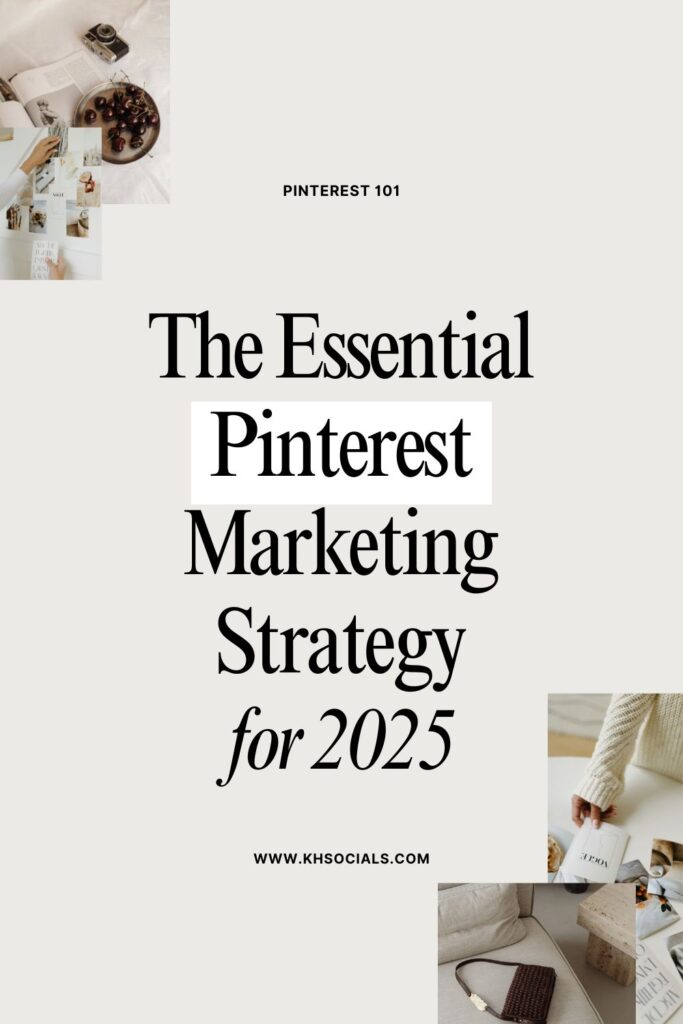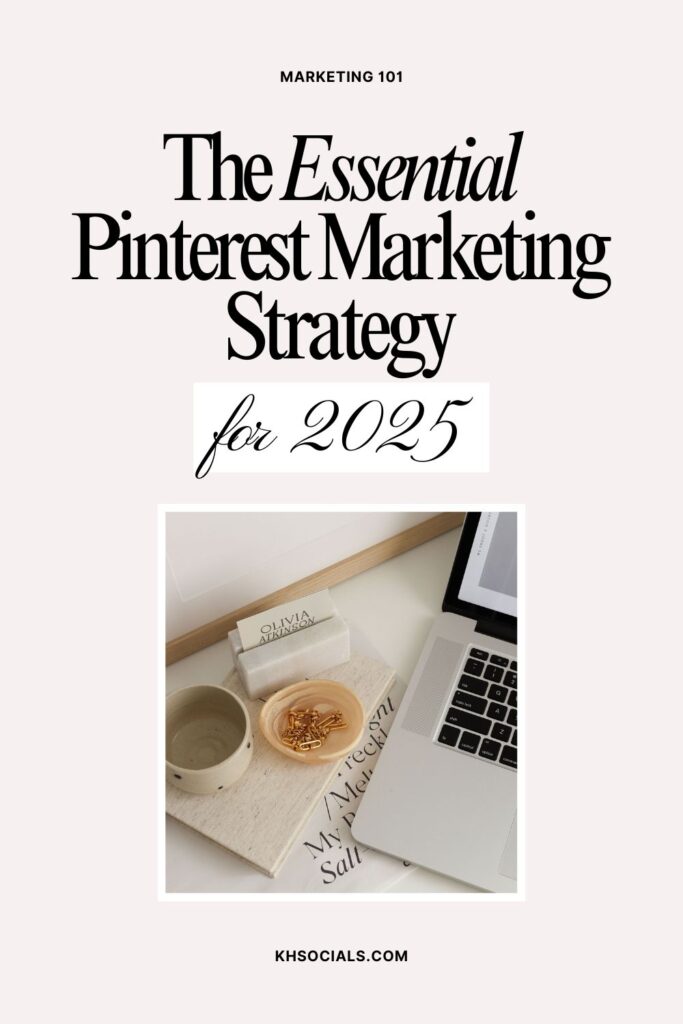Learn how to grow your blog or business with our Pinterest marketing strategy for 2025.
pin it!

Is Pinterest marketing on your business to-do list for the new year? Pinterest is an amazing platform for building brand awareness and driving website traffic,
The biggest thing I hear from bloggers and business owners when it comes to Pinterest is that they know they need to be on the platform, but they’re overwhelmed, and I totally get that! Pinterest operate very differently than social media marketing platforms, and it’s also undergone a lot of changes in the last few years and what’s worked in the past is very different than what works today.
So, that’s where I come in. I’m going to walk you through the 5 steps you need to take to craft a successful Pinterest marketing strategy for 2025 so you can use the power of Pinterest to grow your business.
1. Optimize Your Pinterest Account
Before you begin any actual pinning, you’ll want to make sure that your Pinterest business account is optimized, you’ve done your keyword research, and you’ve created your boards. Click here for a step-by-step account set up guide.
A well optimized account helps Pinterest to understand what you’re about and who you want to reach on the platform- it sets you up for success and helps your Pins to be seen by the right people.
(An account set up/optimization is included in my monthly management packages, so if DIY isn’t your thing, take a look over my services to see how we can work together!).
2. Do Details Pinterest Keyword Research
Because Pinterest is a search engine, SEO and proper keywording is essential for Pinterest to properly understand your content and distribute it to the right audience.
While you’re optimizing your account, be sure to do in-depth keyword research and use these keywords strategically throughout your account.
3. Clarify Your Content Pillars
So, you know you’re going to be pinning, but what will you be pinning? That’s our next question. Blog posts are the most popular (and typically the best performing) content pillar, but other options can include YouTube videos, photography, designs/portfolio pieces, podcast episodes, products, LTK content, and freebies/lead magnets.
One (very important) thing to note is that blog posts aren’t just for bloggers on Pinterest. I always recommend that my clients have a blog, whether they’re a service provider, e-commerce brand, creative, YouTuber, etc. Blog posts are the perfect way to provide information and inspiration to your audience, and they provide you with plenty of fresh content to share to Pinterest (which Pinterest LOVES!).
Understanding the Pinterest user is essential for creating the right kind of content that will attract users. People come to Pinterest for ideas, information, and inspiration, and blog posts are an ideal way to provide this. Considering the Pinterest user and what they’re looking for is so important and often so overlooked. I go into more detail on understanding the Pinterest user here.
Other forms of content you can share are portfolio pages, photography, products, YouTube videos, and freebies/lead magnets, just to name a few.
4. Create New Content Regularly
As we just touched on, the most successful Pinterest accounts have a consistent supply of new content. Pinterest is where people come for new ideas, so Pinterest rewards accounts that create a lot of these things. In the past, Pinterest accounts could rein old content over and over on a loop, but in recent years, Pinterest has shifted to rewarding accounts that create “fresh” content on a regular basis.
If your website currently only has a handful of landing pages, and you don’t plan on adding any new content, you simply won’t have enough content to great a successful pinning strategy.
A weekly blog post is ideal, but if this is too much, stick with what you can realistically take on.
5. Create Eye Catching Pin Designs
Another essential part of a good Pinterest marketing strategy is strong visuals. To help your Pins stand out from the crowd, you want strong aesthetic images that stop the scroll and grab users’ attention.
This will vary depending on my clients’ niche, but I typically like to do a mix of photos and blog post graphics. For my home decor clients, for example, I’ll share a mixture of photos of their designs and blog posts that include their images and text overlay.
6. Commit to a Daily Pinning Schedule
Another thing Pinterest loves is consistency, so you’ll want to make sure you have Pins coming out every day. This in itself can feel overwhelming, but your best friend here is going to be a scheduler (Tailwind is the most popular option for Pinterest). By batching your Pin scheduling on a weekly or monthly (or whatever schedule works for you) basis, you can ensure that you’re scheduling out Pins daily.
A major change from a few years ago is that you need way less Pins/day to be successful. When I first got into Pinterest marketing, best practice was around 100 pins per day (!!). Now, I typically recommend between 5-10 Pins per day (though some of my blogger clients with a lot of content are 20+/day), but even 1 pin/day is better than nothing!
7. Monitor Your Analytics
Regularly checking in on your Pinterest analytics is key to understanding what’s working and what isn’t in your Pinterest strategy. I recommend take a look monthly, quarterly, and annually to see what topics, keywords, and Pin designs/styles are most resonating with your audience.
Unlike other platforms, Pinterest results are best looked at over a longer period of time because even the best accounts will ebb and flow throughout the year. Looking at your results daily or weekly won’t give you an accurate picture of how your content is performing, so make sure to look at the broader picture rather than getting too granular.
pin it for later!

The Essential Pinterest Marketing Strategy for 2025
VIEW THE COMMENTS